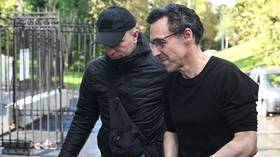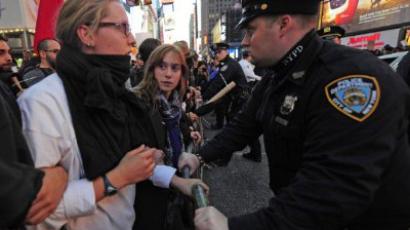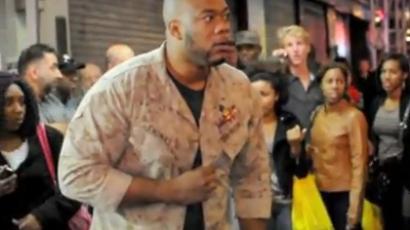Snow and tough police action fail to deter OWS
Police have arrested dozens of OWS protestors in Denver, using pepper spray and rubber bullets on the 2,000-strong crowd. But it appears that neither the tough police actions nor the encroaching winter will shake the determination of activists.
Denver police moved into the camp of the OWS protesters, arresting those who refused to leave. The move to evict the activists came just hours after a massive stand-off that saw pepper spray and tear gas fired into the crowd.In the states of Tennessee and California, more than 50 people were arrested when squads swept through their camps, removing tents, tables and other belongings.The movement has already been tested by snowstorms in Colorado, with harsh conditions now hitting America's East Coast.As New York was hit by only its fourth October snowfall since the Civil War, protesters in the city had to endure the blizzards with no heat after the city authorities stripped them of their power supplies. In Oakland, a peaceful nationwide movement turned violent overnight when police attacked protesters with tear gas, stun grenades, flash bombs and rubber bullets. “We’ve been peacefully protesting for weeks, taking care of ourselves, there have been no incidents with the police and then they came in with the most terrifying shows of force that I have ever seen in my entire life,” recalls Oakland protester and father of two Jasper Bernes, who is working on his PhD at the University of California, Berkley.“They rushed everyone out of the camp or arrested them. Then they began to systematically trample down all of the tents and cut them apart – this made people really angry.”Video footage of former US Marine and Iraq war veteran Scott Olsen being seriously injured by a tear gas canister fired at him by police has shocked the country, galvanizing the Occupy movement across America. Google says the company received requests from “local law enforcement agencies” to remove YouTube videos of police brutality. They did not comply. “The stronger the response from the establishment gets, the stronger the movement will get and the larger the protests will become,” predicts author and radio host David Sirota.Since the protests began six weeks ago, demonstrators have been careful not to taint the movement’s reputation with violence. “By and large, all the reports suggest that so far, this movement has been entirely peaceful,” Sirota says.But the mainstream US media used the night of violence in Oakland to portray the protesters as “undoubted radicals”, “occupiers” and “professional agitators.”“They are trying to characterize us as marginal and radical in order to discredit us,” believes Berkeley doctoral student Jasper Bernes.“This movement is really about all Americans. This is not just about people who historically have been poor. This is about the middle class that is starting to feel the impact of the corporate greed that has run our country for so long,” explains protester Cat Brooks.As the movement grows bigger and more structured, it is becoming harder to ignore the message of the campaigners who call themselves “the 99%” and protest against corporate crime and government complicity.Protesters’ encampments have mushroomed throughout the country. And it seems certain there will be more because the movement is only expanding. Several weeks ago, police started to manage protesters with pepper spray. This week, it was tear gas, rubber bullets and stun grenades. The movement is preparing to hit big business where it hurts the most – next week there will be a general strike demanding banks and corporations shut down for a day. If the police crackdown on protesters has already been over-the-top – what will their response be this time?














